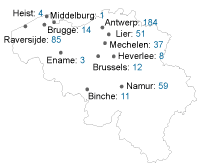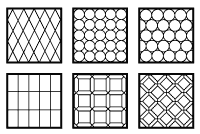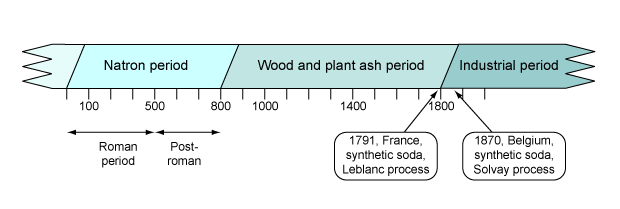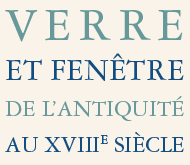∧ Back to top1. Introduction

Fig. 1: Map of Belgium and the cities from which glass has been analysed. Archaeological, plain window glass was collected from Heist, Brugge, Raversijde, Antwerp, Mechelen and Namur. The excavated glass from Binche originated from a stained-glass window. Samples from still existing windows were collected in Antwerp, Lier, Heverlee, and Brussels. The number of analysed fragments is indicated.
Archaeological excavations in historical city centres, mostly basements and cesspools of dwellings, have resulted in the recovery of an extensive number of vessel glass objects of different shapes, but also in a large number of fragments of window glass of different types: plain window glass, high quality mirror glass and fragments of stained-glass with painted-on decorations. Usually, plain window glass is the most frequently encountered type of flat glass in excavations. Although window glass in all periods of its use had a highly utilitarian value and played an important role in the appearance of the facades of buildings, up to now it has been investigated to a far lesser extent than still-existing stained-glass windows (Müller et al., 1994; Schalm et al., 2003), vessel glass (Barrera and Velde, 1989; Janssens et al., 1998; Smit et al., 2004).
The manner in which the chemical composition of vessel glass depends on the vessel shape and on the period and region of fabrication is already well-documented (e.g., Janssens et al., 1998). Due to a lack of published compositions, up to now, such relations could not be studied in detail for window glass. However, a better documentation of the variation of the composition the substrate glass might increase the insight into the deterioration behaviour of stained-glass windows that survived the ravages of time. This article presents the first results of a quantitative study of ca 500 Belgian fragments of 12th--18th century windows. Most of these fragments are archaeological finds; in addition to these, a small set of glass fragments, sampled from intact non-figurative and stained-glass windows was included. Fig. 1 provides an overview of the origin of the window glass fragments that were investigated. Accordingly, this study deals with the relation between the period of fabrication and the chemical composition of the window glass originating from a small geographical region. The use of sea salt and lime as raw materials for the production of glass is discussed as well.
∧ Back to top2. Historical background
On the basis of the alkali source that was used, the technical history of the fabrication of window glass can be subdivided in three subsequent periods: (a) the natron period, (b) the plant and wood ash period, and (c) the industrial period. An overview of these periods is given in Fig. 2. The main periods in the technological history of window glass will be described in this overview (Musée / Site archéologique départemental de Bavay, 2005). The more subtle evolution within the plant and wood ash period, which was determined by the chemical analysis of a large set of window glass, will be given in the following paragraphs.
∧ Back to top(a) Natron period
The earliest glass window panes were probably produced by the Romans during the first century AD (Wolf and Kessler, 2005). It is in the same period that the Romans introduced window glass in north-western Europe. It was employed in villas of rich citizens and in public buildings. For example, in bath houses this transparent material was used to keep the heat inside without disturbing the light entering the building. However, in many other cases, window openings were ‘glazed’ with translucent materials such as thin sheets of stone (i.e., lapis specularis) or parchment.
Roman window glass was made by at least two different techniques: (1) cast window glass, and (2) cylinder window glass. With the first technique, the panes were produced by pouring the fully molten and viscous glass on to a flat surface. The pane is further elongated by pulling the corners with pincers. The cylinder method first involves blowing a large glass cylinder, which is then cut and flattened to produce a sheet of glass. The Roman glass tradition survived the fall of the Roman Empire (476) until at least the 6th century. This type of glass was manufactured by using a batch of natron (a mixture of Na-rich carbonates) with lime-silica sand, resulting in glass with a typical Syro-Palestinian composition.
∧ Back to top(b) Plant and wood ash period
Glass from the 7-10th century is extremely rare in Western Europe and therefore, not much is known about typical glass compositions from that period. Its major use appears to have been for the glazing of church buildings, as is noted in several manuscripts of that period. Since the glassmaking traditions before and after this period were completely different, important technological changes must have been introduced around the 9th century. From that period onwards, instead of natron, wood and plant ashes are being employed as source of alkali. Potash glass is from then on made with ashes of inland plants (e.g., ferns) and ashes of fully-grown trees (e.g., oak, beech). Soda glass was made from ashes of plants grown in saline, sandy habitats, either in maritime (e.g., Barilla, the ashes of the glassworks Salicornia herbacea, Salsola kali and others) or in inland regions (e.g., desert plants from the Levant). Sea plants (e.g., kelp) were also used as sodium source for the production of soda glass. A purified flux for glass making in the form of a mixture of sodium and potassium salts was obtained by extracting the water soluble fraction of wood and plant ash. This extract normally does not contain alkaline earth, iron and/or phosphor compounds in great quantities.

Fig. 3: Common lead patterns for non-figurative windows. The patterns in the top row are typical for the 15th century; the patterns in the bottom row are typical for the 16th century.
In this period, window glass was made by blowing glass with (i) the crown glass method, and (ii) the cylinder method. The technique of casting glass appears to have been abandoned in this period. Since window panes cut from cylinder or crown glass were too small to fill entire window frames, several panes were assembled into larger entities by means of a network of H-shaped lead strips. In stained-glass windows, this network contributes to the design of the picture. In secular buildings, windows with a geometrical network of lead were often used. Several common types of lead patterns are shown in Fig. 3. Archaeological remains of window glass usually feature a high degree of fragmentation and the shape of the former panes can only be identified for a limited number of fragments. For example in the 15th century fisherman town of Raversijde (Belgium), some excavated panes had a lozenge, rectangular, or circular shape.
During the medieval period, the use of window glass in north-western Europe was mainly restricted to the religious communities. It was only from the late 14th century that non-figurative windows were used by the elite in prosperous cities. This could be concluded from the archaeological excavations in the highly urbanised region of coastal Flanders such as the remains of the 15th century fishermen village Raversijde (Schalm et al., 2004). While at first, only the upper parts of the window frames were filled with glass panes, gradually window frames would be completely filled with glass-in-lead.
Most of the window glass fragments studied here had a light green hue; intentionally coloured glass was only rarely encountered in secular buildings.
∧ Back to top(c) Industrial period
In the 19th century, the natural alkali sources were gradually replaced by synthetic soda (Na2CO3). In 1791 synthetic soda was produced in France by the Leblanc process. Later, in 1870 Solvay introduced an improved method for the fabrication of synthetic soda. Therefore, the period from the 19th century onwards is called the industrial period. However, during this period potash glass was still used for the fabrication of glass. For example, some vessel and window glass fragments originating from Marinha Grande (Portugal) contain typical 19th century colorants such as CdSe, Cr2O3 or U3O8 while the matrix was made with potash glass or mixed-alkali glass (Schalm et al. , unpublished results).
Cast glass reappeared at the end of the 17th century but it was only used for the production of mirror glass and of coloured glass panes impressed with patterns. Although the size of the window panes were larger than before, the manual fabrication techniques employed during the plant and wood ash period were used at least until the end of the 19th century. It was only at the end of the 19th century that a mechanical technology for mass production of window glass was introduced. The production of continuous sheets of glass started in 1914 by means of the Fourcault machine, a system developed by the Belgian engineer Emile Fourcault in 1905 (Douglas and Frank, 1972).


